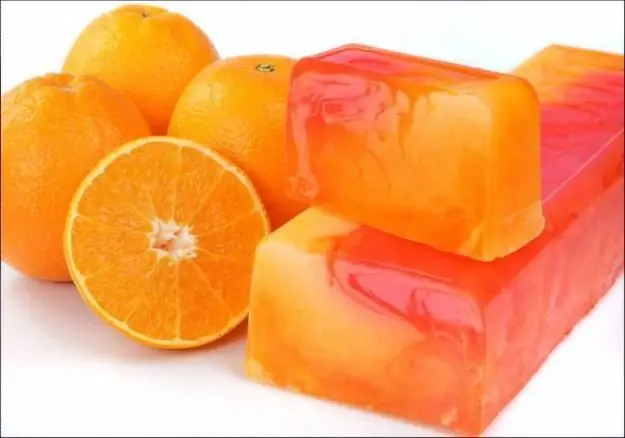Now on the shelves of stores there is a huge variety of different types of soap: liquid, with an antibacterial effect, with cream, and so on. However, homemade soap is becoming more and more popular. The thing is that handmade soap is much better and more useful than industrially made soap, besides, it is very beautiful and can become a wonderful gift for loved ones and a real decoration of the bathroom.

How to make handmade soap
The soap making process is quite simple. First you need to prepare all the necessary ingredients. Take a soap base. It is sold in specialized stores, the packaging is quite large, usually 1 kg, so it will be enough to make at least 10 bars of soap, 100 g each. The soap base can be matte and transparent; the appearance of the soap will depend on this, respectively.
The soap base can be replaced with regular odorless baby soap and additives.
Melt the soap base in a water bath. It should have a homogeneous state and be the consistency of thick sour cream. Pre-cut the base into pieces, and if you are using baby soap, then grate it on a coarse grater, put it in a bowl and put it in a pot of boiling water. Stir as it heats up.
If the mass is thick, add a little liquid - water or milk.
Use essential oils to add aroma. It is enough to drop 5-7 drops. However, it should be borne in mind that many of the additives, for example, honey or coffee, also have a characteristic smell, so all the aromas must be combined.
Next, add the necessary additives to the mass. These can be dried herbs, ground rose hips, cosmetic clay, or coffee grounds. Many additives by themselves give the soap a pleasant shade, but it can also be dyed to the desired color using special dyes.
How to give soap its original shape
The resulting mass must be poured into molds. You can use any plastic containers for this. Do not pour the mass into glass, enamel or porcelain dishes, since it will be almost impossible to remove the finished soap.
It is very convenient to use silicone baking dishes; it is quite easy to remove the finished product from them. You can also pour the soap mass into any plastic cups, mugs, butter or cheese containers, and so on.
To prevent cracks or bubbles from forming on the finished soap, sprinkle the surface with alcohol from a spray bottle and leave the mass to cool for about 12 hours. The soap can now be removed from the mold, but it will not be possible to use it until after a week. Allow the garment to dry in a dry place, while turning the soap periodically to dry evenly.






